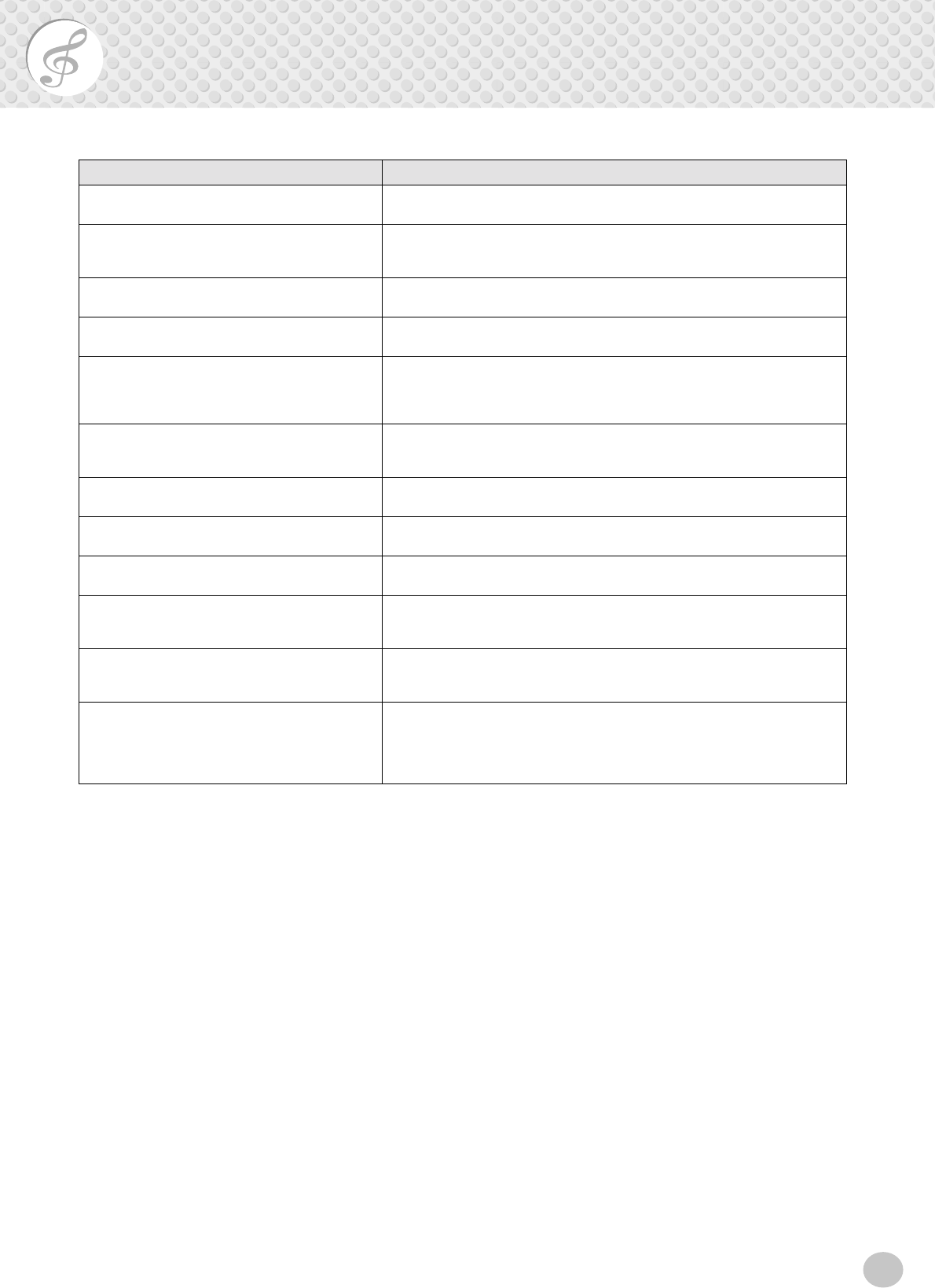
53
Troubleshooting
Problem Possible Cause and Solution
When the PSR-160 is turned on or off, a popping
sound is temporarily produced.
This is normal and indicates that the PSR-160 is receiving electrical power.
When using a mobile phone, noise is produced. Using a mobile phone in close proximity to the PSR-160 may produce interfer-
ence. To prevent this, turn off the mobile phone or use it further away from the
PSR-160.
The sound of the voices or rhythms seems unusual
or strange.
The battery power is too low. Replace the batteries. (See page 8.)
There is no sound even when the keyboard is
played or when a Song is being played back.
Check that nothing is connected to the PHONES/OUTPUT jack on the rear panel.
When a set of headphones is plugged into this jack, no sound is output.
When playing back one of the Pianist styles (#081 -
#100), the rhythm cannot be heard.
This is normal. The Pianist styles have no drums or bass — only piano accom-
paniment. The accompaniment of the style can only be heard when accompani-
ment is set to ON and keys are played in the auto accompaniment section of the
keyboard.
The auto accompaniment doesn’t turn on, even
when pressing the [ACCOMPANIMENT ON/OFF]
button.
Make sure the Style mode is active before using the auto accompaniment. Press
the [STYLE] button to enable style operations.
Not all notes are heard when playing a number of
notes simultaneously.
Too many keys are pressed at the same time. The PSR-160 is polyphonic up to
a maximum of 16 notes.
Playing keys in the right hand section of the key-
board does not produce any sound.
When using the Dictionary function (page 41), the keys in the right hand section
are used only for entering the chord root and type.
The accompaniment does not sound properly. Make sure that the Accompaniment Volume (page 47) is set to an appropriate lev-
el.
The Multi Pad sound is cut off or sounds unusual. The PSR-160 is polyphonic up to a maximum of 16 notes. If a style or song is
playing back at the same time a Multi Pad is played, some notes/sounds of the
Multi Pad may be omitted (or “stolen”) from the accompaniment or song.
The sound of the voice changes from note to note. The AWM tone generation method uses multiple recordings (samples) of an in-
strument across the range of the keyboard; thus, the actual sound of the voice
may be slightly different from note to note.
The notes shown in the music staves and keyboard
diagram in the display do not match the keys actual-
ly played.
When auto accompaniment is on, the display shows the specific notes of the
chords you play in the auto accompaniment section of the keyboard. If you play
a single finger chord, or an inversion of a chord, the corresponding chord will be
appropriately displayed — even if the display does not exactly match the pressed
keys.


















